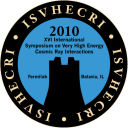Speaker
Dr
John Mitchell
(NASA Goddard Space Flight Center)
Description
Using high-performance superconducting or permanent magnets coupled with precision detector systems, magnetic-rigidity spectrometers have the unique ability to completely identify incident particles by charge, charge-sign, mass, and energy. Magnetic spectrometers are central to measurements of cosmic antiparticles and the spectra of light isotopes and elements. Positron and antiproton spectra measured by magnetic spectrometers are important in constraining dark-matter models as well as models for the origin, acceleration, and transport of cosmic rays in the Galaxy and Heliosphere. Searches for heavier antinuclei probe symmetry-breaking processes in the early Universe. Measurements of light-isotope spectra to relativistic velocities constrain models for cosmic-ray transport and storage in the Galaxy. Instrumental techniques used in modern magnetic-rigidity spectrometers and results from recent experiments will be reviewed. Prospects for future magnetic spectrometer instruments will be discussed.
| If this is a contributed presentation, please indicate preference for Oral (O) or Poster (P): | O |
|---|
Primary author
Dr
John Mitchell
(NASA Goddard Space Flight Center)
